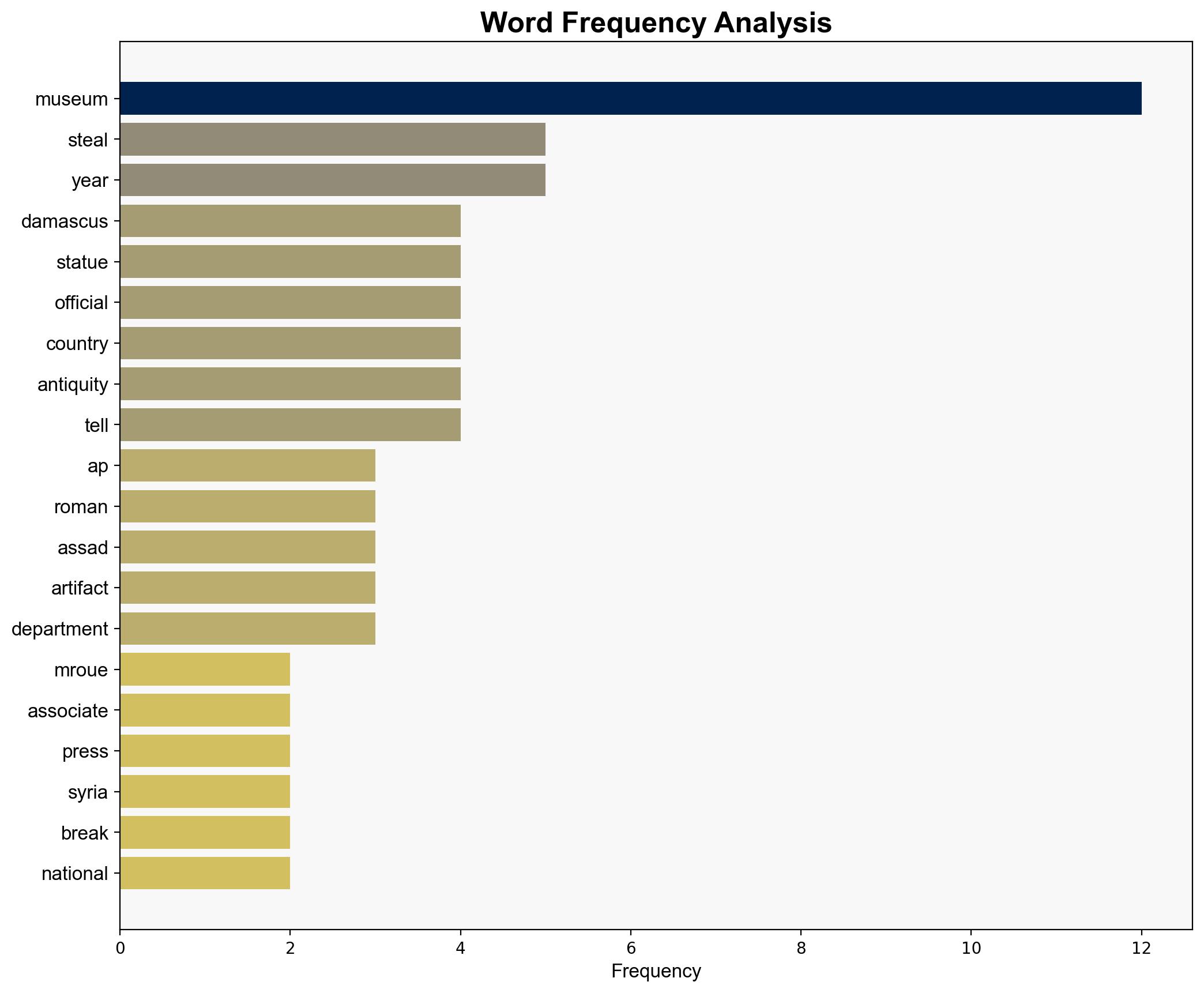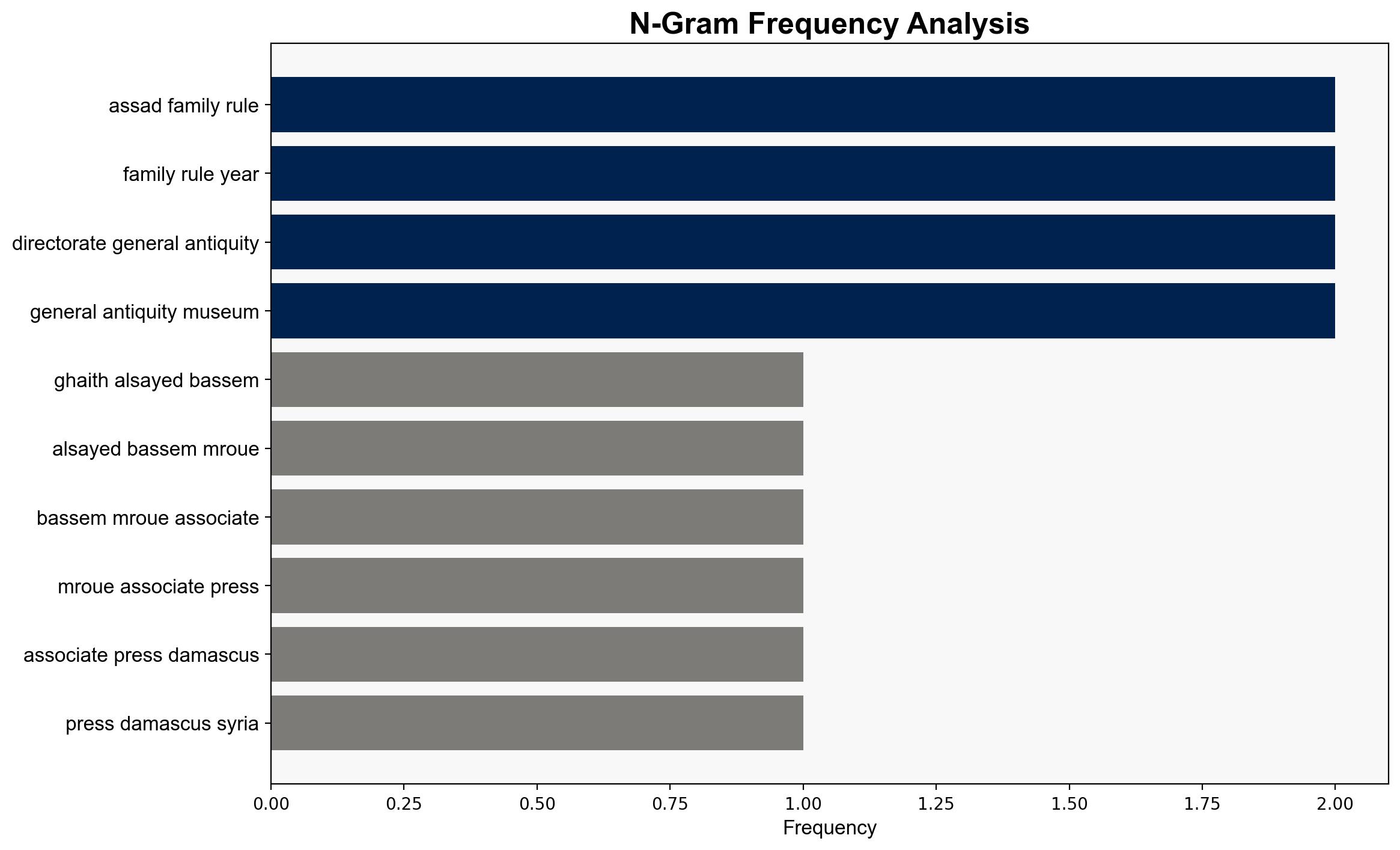Thieves steal Roman statues from Syrias national museum – Boston Herald
Published on: 2025-11-11
AI-powered OSINT brief from verified open sources. Automated NLP signal extraction with human verification. See our Methodology and Why WorldWideWatchers.
Intelligence Report: Thieves steal Roman statues from Syria’s national museum – Boston Herald
1. BLUF (Bottom Line Up Front)
The theft of Roman statues from Syria’s national museum is likely a targeted operation by organized crime networks exploiting the region’s instability. With a moderate confidence level, the hypothesis that organized crime is involved is most supported. Recommended actions include enhancing museum security and international cooperation to track and recover stolen artifacts.
2. Competing Hypotheses
Hypothesis 1: The theft was orchestrated by organized crime networks specializing in antiquities trafficking, taking advantage of Syria’s recovering security situation.
Hypothesis 2: The theft was an opportunistic act by local individuals or groups, possibly with insider assistance, exploiting temporary security lapses at the museum.
Hypothesis 1 is more likely due to the targeted nature of the theft, focusing on rare and valuable Roman statues, suggesting knowledge and resources typical of organized crime. Hypothesis 2 is less likely but cannot be dismissed given the region’s history of opportunistic looting during periods of instability.
3. Key Assumptions and Red Flags
Assumptions: The museum’s security measures were insufficient or compromised. Organized crime networks have the capability to operate in Syria.
Red Flags: The anonymity of officials and lack of detailed information about the theft raise concerns about potential insider involvement or cover-ups.
Deception Indicators: The swift reopening of the museum and limited public disclosure could indicate an attempt to downplay the incident’s severity.
4. Implications and Strategic Risks
The theft poses significant risks to Syria’s cultural heritage and could fuel further antiquities trafficking, undermining regional stability. Politically, it highlights vulnerabilities in state control and governance. Economically, it could deter cultural tourism, impacting recovery efforts. Informationally, it may damage Syria’s international reputation and relations with cultural preservation entities.
5. Recommendations and Outlook
- Enhance museum security with advanced surveillance and access controls.
- Engage with international law enforcement and cultural heritage organizations to track and recover stolen artifacts.
- Conduct thorough internal investigations to identify potential insider threats.
- Best-case scenario: Artifacts are recovered, and security measures are strengthened, deterring future thefts.
- Worst-case scenario: Artifacts are lost to the black market, and similar incidents occur, exacerbating regional instability.
- Most-likely scenario: Partial recovery of artifacts with improved but still vulnerable security measures.
6. Key Individuals and Entities
Ghaith Alsayed, Bassem Mroue, Brig. Gen. Osama Atkeh, Maamoun Abdulkarim.
7. Thematic Tags
National Security Threats
Structured Analytic Techniques Applied
- Cognitive Bias Stress Test: Expose and correct potential biases in assessments through red-teaming and structured challenge.
- Bayesian Scenario Modeling: Use probabilistic forecasting for conflict trajectories or escalation likelihood.
- Network Influence Mapping: Map relationships between state and non-state actors for impact estimation.
Explore more:
National Security Threats Briefs ·
Daily Summary ·
Methodology





